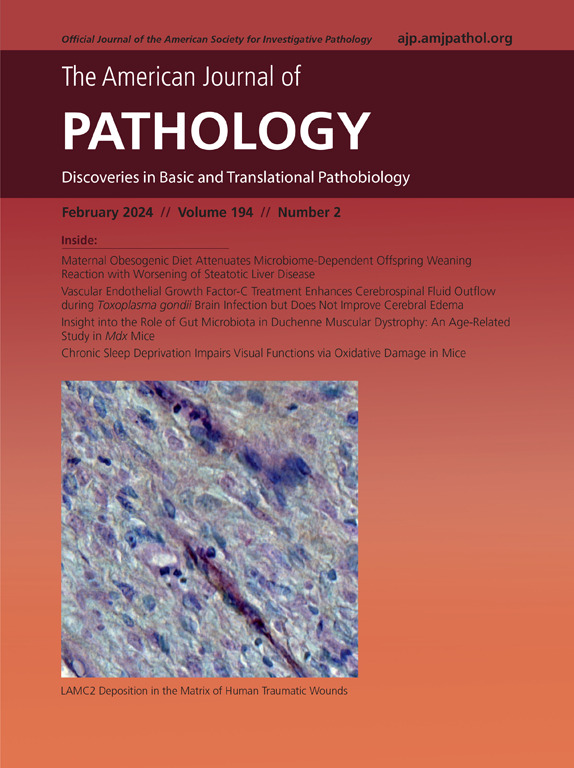A Deep Learning Approach for the Identification of the Molecular Subtypes of Pancreatic Ductal Adenocarcinoma Based on Whole Slide Pathology Images
IF 4.7
2区 医学
Q1 PATHOLOGY
引用次数: 0
Abstract
Delayed diagnosis and treatment resistance result in high pancreatic ductal adenocarcinoma (PDAC) mortality rates. Identifying molecular subtypes can improve treatment, but current methods are costly and time-consuming. In this study, deep learning models were used to identify histologic features that classify PDAC molecular subtypes based on routine hematoxylin-eosin–stained histopathologic slides. A total of 97 histopathology slides associated with resectable PDAC from The Cancer Genome Atlas project were used to train a deep learning model and test the performance on 44 needle biopsy material (110 slides) from a local annotated patient cohort. The model achieved balanced accuracy of 96.19% and 83.03% in identifying the classical and basal subtypes of PDAC in The Cancer Genome Atlas and the local cohort, respectively. This study provides a promising method to cost-effectively and rapidly classify PDAC molecular subtypes based on routine hematoxylin-eosin–stained slides, potentially leading to more effective clinical management of this disease.
基于全切片病理图像的胰腺导管腺癌分子亚型鉴定深度学习方法。
延迟诊断和耐药性使胰腺导管腺癌(PDAC)的死亡率居高不下。识别分子亚型可以改善治疗,但目前的方法成本高、耗时长。本研究利用深度学习模型,基于常规苏木精-伊红(H&E)染色的组织病理切片,识别可对 PDAC 分子亚型进行分类的组织学特征。利用癌症基因组图谱(TCGA)项目中与可切除PDAC相关的97张组织病理切片来训练深度学习模型,并在本地注释患者队列中的44份针刺活检材料(110张切片)上测试其性能。该模型在 TCGA 和本地队列中识别 PDAC 经典亚型和基底亚型的均衡准确率分别达到 96.19% 和 83.03%。这项研究为基于常规 H&E 切片对 PDAC 分子亚型进行经济有效的快速分类提供了一种很有前景的方法,有可能为这种疾病带来更有效的临床治疗。
本文章由计算机程序翻译,如有差异,请以英文原文为准。
求助全文
约1分钟内获得全文
求助全文
来源期刊
CiteScore
11.40
自引率
0.00%
发文量
178
审稿时长
30 days
期刊介绍:
The American Journal of Pathology, official journal of the American Society for Investigative Pathology, published by Elsevier, Inc., seeks high-quality original research reports, reviews, and commentaries related to the molecular and cellular basis of disease. The editors will consider basic, translational, and clinical investigations that directly address mechanisms of pathogenesis or provide a foundation for future mechanistic inquiries. Examples of such foundational investigations include data mining, identification of biomarkers, molecular pathology, and discovery research. Foundational studies that incorporate deep learning and artificial intelligence are also welcome. High priority is given to studies of human disease and relevant experimental models using molecular, cellular, and organismal approaches.

 求助内容:
求助内容: 应助结果提醒方式:
应助结果提醒方式:


